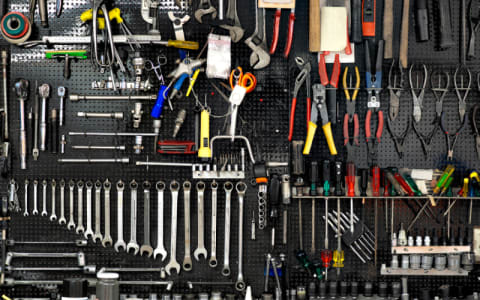New York’s deer hunting scene is getting a major overhaul. The state’s Department of Environmental Conservation (DEC) has rolled out a set of proposed changes for 2025 that aim to bring hunting into the digital age, make things easier for young hunters, and help landowners manage deer populations more effectively. These updates are designed to keep hunting practical and sustainable while addressing issues like growing deer numbers, car accidents, and even Lyme disease concerns tied to an exploding deer population. Hunters and outdoor enthusiasts have until August 18, 2025, to weigh in on these changes, which could reshape how the sport is practiced across the state.
Smartphone Tagging: A Game-Changer for Hunters
One of the biggest shifts on the table is the move to electronic carcass tags for deer, bears, and turkeys. Instead of fumbling with paper tags, hunters will soon have the option to use the DEC’s HuntFishNY mobile app to report their harvests and generate digital tags. This means no more carrying around a physical tag as long as the hunter keeps the carcass with them. The app is built to work even in remote areas without cell service, storing harvest data until a connection is available. Once the carcass is left unattended—like at a taxidermist or processor—hunters will need to attach a physical tag with their name and a confirmation number from the app.
For those who prefer sticking with paper tags, there’s a catch: the reporting window is shrinking. The DEC wants to cut the time hunters have to report their harvests from seven days to just 48 hours. This change is meant to help wildlife officials keep better tabs on harvest numbers and ensure accurate data for managing wildlife populations. It’s a practical step, but it’ll mean hunters need to be quicker about logging their kills.
This digital push reflects a broader effort to modernize hunting in New York. As deer populations grow—fueled partly by milder winters due to climate change—the DEC is looking for ways to streamline processes and make hunting more accessible while keeping it sustainable. The electronic tagging system could save time and hassle, especially for hunters who are already glued to their phones for navigation, weather updates, or sharing photos of their latest haul.
Extra Chances for Young Hunters
The DEC is also looking out for the next generation of hunters. Under the proposed rules, youth hunters who fill their regular season tag during the Youth Big Game Hunt will get a replacement tag for the regular firearms season. The catch? The replacement tag will be for a deer of the opposite sex from the one they already harvested. This gives young hunters a second shot at participating in the season, encouraging them to stay engaged in the sport.
This move is a nod to the importance of getting kids out in the field. Hunting is a tradition for many families, and giving young hunters more opportunities to succeed could help keep that tradition alive. It’s also a way to ensure that the sport grows with a new generation, especially as deer populations continue to climb, creating more need for skilled hunters to help manage them.
Streamlining the Deer Management Assistance Program
Landowners are getting some attention in these proposals too. The DEC’s Deer Management Assistance Program (DMAP) helps private landowners control deer populations on their property, which is critical in areas where deer are causing problems like crop damage, car crashes, or spreading Lyme disease. The proposed changes would make DMAP more flexible and less of a paperwork headache.
First, the DEC wants to extend the DMAP permit renewal cycle from three years to five. This gives landowners more time to put consistent deer management plans in place without having to reapply as often. Second, the cap on the number of DMAP tags per permit—currently set at four—would be lifted. Instead, DEC staff would decide how many tags a landowner gets based on the size of their property and their specific management needs. These changes aim to make it easier for landowners to address deer-related issues on their land, whether it’s protecting crops or reducing the risk of collisions on nearby roads.
Why These Changes Matter
New York’s deer population has been on the rise, and it’s causing real problems. More deer mean more car accidents, higher rates of Lyme disease, and increased damage to crops and forests. Climate change isn’t helping—warmer winters allow more deer to survive, leading to larger herds. The DEC’s proposed changes are a direct response to these challenges, aiming to balance the needs of hunters, landowners, and the environment.
By introducing digital tags, the DEC is making it easier for hunters to comply with regulations while improving the speed and accuracy of harvest reporting. The shorter reporting window for paper tags ensures wildlife managers get timely data to track deer populations. Meanwhile, the youth hunter tag replacement and DMAP updates are about keeping hunting accessible and effective, especially in areas where deer numbers need to be controlled.
How to Have Your Say
The DEC is encouraging everyone with a stake in hunting—whether you’re a seasoned outdoorsman, a landowner, or just someone concerned about deer-related issues—to chime in on these proposals. Public comments are being accepted until August 18, 2025. You can send your thoughts via email to wildliferegs@dec.ny.gov with the subject line “e-tags and DMAP,” or mail them to NYSDEC, Attn: Deer Hunting Regs, 625 Broadway, Albany, NY 12233-4754.
This is a chance for hunters and others to shape the future of deer hunting in New York. Whether you’re excited about digital tags, want to see more opportunities for young hunters, or have ideas about managing deer on private land, the DEC wants to hear from you. The feedback period is a critical step in making sure these changes work for everyone.
What’s Next for New York Hunters?
As the DEC moves forward with these proposals, hunters can expect a mix of new tech and practical tweaks to the rules. The shift to digital tags could make life easier for those comfortable with smartphones, while the shorter reporting deadline for paper tags will keep everyone on their toes. Young hunters will get a boost with extra chances to hunt, and landowners will have more tools to manage deer on their property.
These changes are part of a broader effort to keep New York’s hunting traditions alive while addressing modern challenges. With deer populations growing and causing more issues, the DEC’s proposals aim to make hunting more efficient, sustainable, and inclusive. As the public comment period wraps up, hunters across the state will be watching to see how these changes play out in the field.





